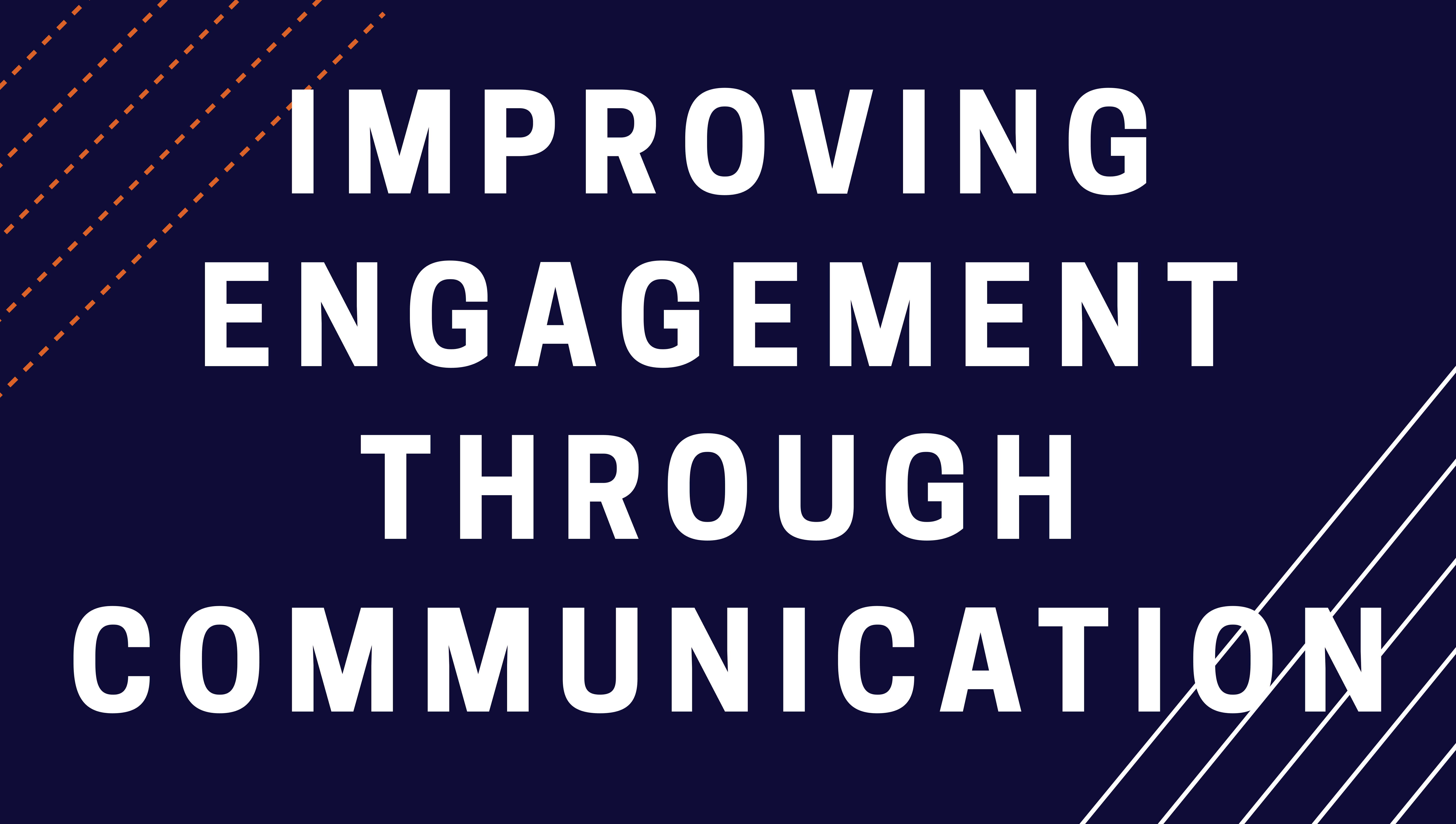Your employee engagement surveys are complete, but it takes more than simply measuring employee engagement to create outcomes. Simply put, measurement doesn’t generate change. Sure, it can identify areas of concern that need a leader's attention. Yet it does little to get to the heart of the problem: Addressing and improving the leader behaviors and connected processes that encourage true and lasting employee engagement.
As fears of an economic downturn loom and companies from across industries continue to announce layoffs, the propensity to batten down the hatches in anticipation of challenging times is seen as the best recourse. Some companies are pumping the brakes on capital investments, while others trim travel budgets, hiring and salary increases, and even some employee benefits.
And yet, the same employee engagement survey you’ve been deploying for years that has failed to move the needle continues to get executed. At the same time, your teams continue to perform their work the same way they always have.
Why is this? Simply put, measurement alone doesn’t generate change. Sure, it can identify areas of concern that need a leader's attention. But are the operational processes or support mechanisms provided across the organization in place to create the environment where these critical issues can be improved? As important as managers are to individual and team engagement, they are limited by the foundational ways of working across the company.
During this time when budgets are being scrutinized, we recommend to the teams we work with to step back from these underperforming measurement activities and evaluate the operational levers with the greatest influence on organizational engagement. Our research points to three key drivers:
- Strategic alignment
- Empowered decision making
- Transparent communication
Below we’ll outline the common obstacles associated with each of these drivers and identify the specific organizational processes leaders can work on to create an environment where employee engagement can thrive.
Strategy Alignment

Organizational alignment is a key differentiator between high-performing and low-performing companies. Highly aligned companies grow revenue 58% faster, are 72% more profitable, and outperform their counterparts in employee engagement and retention, according to research from LSA Global.
Our data show that only about half of employees say their company leadership articulates how their team’s goals contribute to broader organizational objectives. And employees who report that they understand how their team’s goals contribute to organizational objectives are nearly 3 times more likely to be highly engaged.

This importance of alignment shouldn’t be surprising as the foundation of individual engagement is having a clear understanding of what is expected of you every day. This goes beyond knowing your job description, but also being able to prioritize when the inevitable conflict arises and being trusted to do so. As organizations continue efficiency efforts, asking more from every individual, the challenge of overworked employees only increases this confusion.
While employees continue to indicate that they understand how they as individuals fit within their team, they are less likely to agree that they understand how their team’s goals fit within a broader organizational strategy. This reality creates significant risk to your organization's performance.
Do This Not That
As a leader, make sure you understand the broader strategy of the organization. Not just being able to recite the words, but appreciating why this is the strategy, how your function and team fit into the bigger picture, and what this means for prioritization decisions as individuals and as a group.
If your organization is like many others and there is no formal process in place to connect the dots, start with your immediate function and ask questions. If you are in the C-Suite then you and your colleagues should be spearheading the effort to clearly articulate this cohesive strategy and provide the space for the dialogue and discussion necessary to create alignment to it.
Once you understand the broader strategy, leaders should articulate the link between initiatives that connect to the priorities driving the strategy. Initiatives are the tasks owned at the lower levels. Talking strategy at a higher level just isn't enough. Your team may be able to recite the organizational strategy, but it's equally important that they can interpret what that means from a day-to-day perspective and how their actions contribute to accomplishing said strategy.
Empowered Decision Making
Employees with high degrees of empowerment are 89% more likely to be engaged.
Autonomy is central to many individuals' ability to be engaged at work. The ability to make decisions for yourself drives motivation, contributing to higher levels of performance and well-being. It also gives leaders more time to focus on the most significant and complex decisions, uninhibited by some of the day-to-day decisions that take up valuable brain space. However, creating more autonomy among employees requires senior leaders letting go of many of the decisions they make today in a shift towards those closest to the issue at hand.

This goes against human nature, and more specifically, leader’s tendencies in the way people typically think of decision making within their role. For executives who have existed their whole careers in traditional, hierarchical organizations, decision making authority is held by a select few—and many decisions are left unspoken, making this shift all the more difficult.
As such, we see at many organizations that employees simply aren’t accustomed to making decisions, owning those decisions, and executing them. But leaders can’t just flip a switch and hand the proverbial football to their employees. Even the most capable will wonder and second guess whether they’re doing the right thing.
That’s why effective decision making requires clear decision space – meaning that every team member must feel empowered to make decisions in their own sphere of influence and understand the wider impact of those decisions. While leaders often think they’re empowering their teams to make decisions independently, our data show a distinct gap between perception and reality, with only half of employees surveyed agreeing that “leadership in my organization respects decisions my team makes.” Such a finding indicates that teams are not effectively empowered to make decisions and have those decisions resourced and executed.
Do This Not That
Empowerment is a leader behavior that requires a conscious decision to not just trust in the competence of others, but to invest in proactively building the ways of working that will help your team be successful when empowered. Leaders can better empower front-line decision making by:
- Reflect on what are areas where, if your team was more empowered, they (or you) would be able to move with significantly more speed or flexibility to drive critical outcomes? Start with one or two areas where you believe you could see real impact from change.
- Take a critical eye on what would stand in the way of your team being successful with more independence and ownership of this area. The Skill, Hill, Will framework can be helpful here. Are there knowledge or experience gaps that you need to close and provide coaching on? Are there organizational barriers or biases that you can proactively mitigate? What will motivate your team to take the risk and step up into this new space – independence, growth, impact?
- Then, engage your team and share your reflections and goals. Emphasize that you intend to support them on this journey and then do so. Successful empowerment is far more than simple delegation, and it will take additional effort from you in the short term.
Remember that your goal is to empower teammates in areas that matter to the business and enable them to have more of an impact. This is what will drive meaningful engagement.
Transparent Communication

Employees who are kept in the loop (or better, become an integral part of the loop) and can see how their work contributes to the overall success of the organization will be that much more motivated to achieve their individual work targets. Ultimately, this will drive a sense of ownership in the organization’s direction and long-term health. Real engagement comes from thinking and acting like owners.
Our own research shows employees who say they usually or always receive valuable information from the meetings they attend are roughly 2.5 times more likely to agree that they feel motivated when they think about the future of their organization.
Those meetings provide the space for cross-functional communication, sharing lessons learned and best practices, as well as providing a forum for knowledge exchange and management.

Improving Engagement Through Communication
Do This Not That
Communicating in easy-to-understand language helps employees receive and process new information and improves their overall morale. Leaders can also utilize storytelling to deliver critical ideas. The story will not only be more memorable, but it will also provide your employees with a real-world example that can likely be applied across a wide spectrum of contexts.
Leaders can also communicate the big picture by first introducing the concept, for example, a new strategy or priorities for the quarter, and then follow it up with a short-term focus on the nearest milestone that allows the employee to contextualize the path forward. This will shift employees' attention to where it needs to be — the task and expectations immediately in front of them.
Build these transparent communication habits into your operating rhythm to ensure they don’t slip through the cracks. A thoughtfully designed operating rhythm can also be utilized to highlight under-leveraged voices within an organization, as well as promote community-building within a remote environment.
As a leader, you have to constantly keep the vision in front of your people. So much so that you're sick of it. You're going to be sick of talking about it all the time, and you're going to think you're on your soapbox all the time.”
Jake Harriman, Senior Advisor at McChrystal Group
Founder and CEO of More Perfect Union
In most cases, employee engagement surveys put a band-aid on complex and layered issues that require process improvements to support desired behavior changes.
Healthy organizations create an environment for lasting employee engagement, operate with extensive and intentional communication channels, a healthy collaboration culture, open lines for information sharing, and pervasive honest feedback with real accountability. Traditional engagement surveys can tell you if individuals, teams, and functions are engaged but rarely will pinpoint the strength or weakness of these three critical organizational capabilities that if unaddressed will continue to limit the potential of your organization.
Improved processes will help unite people around a common vision and set of priorities, inspiring people to do their best work. Learn how with our curated collection of resources.
Do This Not That
Communicating in easy-to-understand language helps employees receive and process new information and improves their overall morale. Leaders can also utilize storytelling to deliver critical ideas. The story will not only be more memorable, but it will also provide your employees with a real-world example that can likely be applied across a wide spectrum of contexts.
Leaders can also communicate the big picture by first introducing the concept, for example, a new strategy or priorities for the quarter, and then follow it up with a short-term focus on the nearest milestone that allows the employee to contextualize the path forward. This will shift employees' attention to where it needs to be — the task and expectations immediately in front of them.
Build these transparent communication habits into your operating rhythm to ensure they don’t slip through the cracks. A thoughtfully designed operating rhythm can also be utilized to highlight under-leveraged voices within an organization, as well as promote community-building within a remote environment.
As a leader, you have to constantly keep the vision in front of your people. So much so that you're sick of it. You're going to be sick of talking about it all the time, and you're going to think you're on your soapbox all the time.”
Jake Harriman, Senior Advisor at McChrystal Group
Founder and CEO of More Perfect Union
In most cases, employee engagement surveys put a band-aid on complex and layered issues that require process improvements to support desired behavior changes.
Healthy organizations create an environment for lasting employee engagement, operate with extensive and intentional communication channels, a healthy collaboration culture, open lines for information sharing, and pervasive honest feedback with real accountability. Traditional engagement surveys can tell you if individuals, teams, and functions are engaged but rarely will pinpoint the strength or weakness of these three critical organizational capabilities that if unaddressed will continue to limit the potential of your organization.
Improved processes will help unite people around a common vision and set of priorities, inspiring people to do their best work. Learn how with our curated collection of resources.





